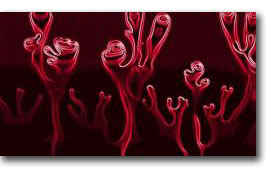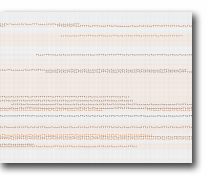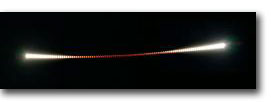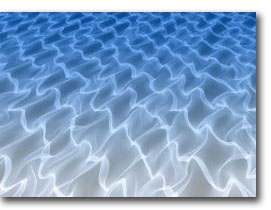Canon 1 a 2
xantox, 18 January 2009 in GalleryOther Languages:
In the enigmatic Canon 1 a 2 from J. S. Bach’s “Musical Offering” (1747) (also known as “crab canon” or “canon cancrizans”), the manuscript shows a single score, whose beginning joins with the end. This space is topologically equivalent to a bundle of the line segment over the circle, known as a Möbius strip. The simultaneous performance of the deeply related forward and backward paths gives appearance to two voices, whose symmetry determines a reversible evolution. A musical universe is built and then is “unplayed” back into silence.1





